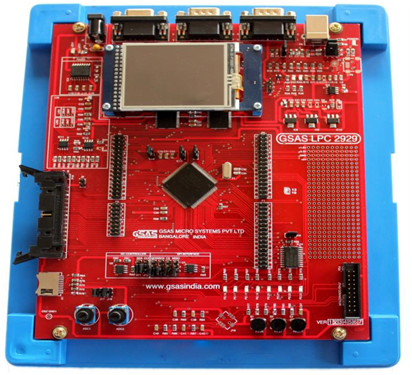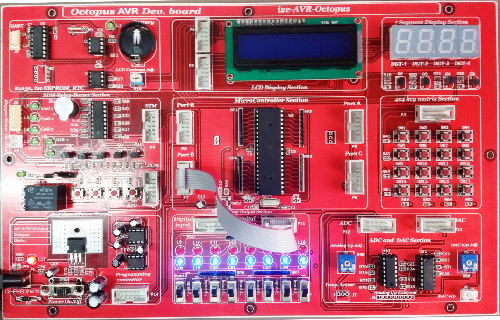



LPC 2929 is an evaluation board for the NXP LPC 29xx microcontroller family. LPC 2929 allows the user to evaluate the capabilities of the NXP LPC 29xx and create real working environment with KEIL development tools. The LPC 2929 is supplied with the NXP LPC 2929 the superset of several other device variants of the NXP LPC 29xx controller
LPC 2929 is powered by USB port. A serial connection is provided for In-System-Programming and it provides Serial (RS-232), CAN and USB interfaces as well as 8 LEDs, analog input (via potentiometer) and three switches. On-board JTAG connector is provided for connecting JTAG based debuggers like KEIL ULINK, SEGGER J-LINK, etc.,
On board power supply connector and 26 pin FRC connector are available for interfacing the GSAS LPC 2929 board to some of the Interface Modules such as Seven Segment Display, Elevator, Traffic Lights, Dual DAC, Txdr ADC etc., enables the user to develop and debug code for the GSAS interface modules.



1. Embedded Dev ARM LPC2148 “iem-201-Machu” Board is a evaluation board for LPC2148 ARM7TMDI based microcontroller.
2. The LPC2148 microcontroller has 512KB of internal flash and 32+8K RAM.
3. Following are the salient features of the board.